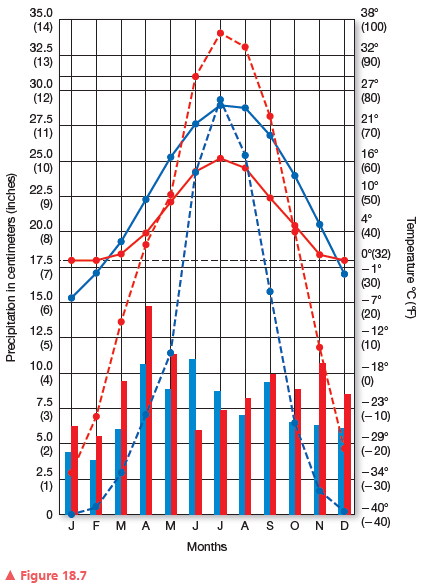Evaluate Chicago’s current annual March–May, June–August, and September–November water balances. What is the annual surplus or deficit? What are Chicago’s projected annual March–May, June– August, and September–November water balances? What is the annual surplus or deficit? Which months have the greatest projected surplus? Which months have the greatest projected deficits?
Chicago, Illinois
Latitude 41.81°N
Longitude 87.68°W
Elevation 182 m
Population 2,714,856

Current March-May is a surplus of 11.3 cm, projected is a 14 cm surplus. Current June-August is a 14.7 deficit, projected is a 58.3 cm deficit. Current September-November is a 9.5 cm surplus, projected is a 6 cm surplus. The current annual budget is a 21.4 cm surplus, projected is a 19.1 cm deficit. The summer months have the greatest deficit of 58.3 cm.
You might also like to view...
One in every ____ people worldwide suffers from an iron deficiency.
A. 2 B. 5 C. 20 D. 50 E. 100
Which portions of the citric acid cycle produce most of the energy generated by the cycle?
A) formation of GTP B) hydrolysis of GDP C) oxidation of FADH2 and NADH D) reduction of FAD and NAD+
Which of the following is not a mechanism that will cause air to rise?
A) convergence B) convective cooling C) orographic lifting D) frontal Wedging E) conduction cooling
You are in upstate New York and observe the wind shift from easterly to southerly. This shift in wind is accompanied by a sudden rise in both the air temperature and dew-point temperature. This means a(n) ____ front passed
a. cold b. occluded cold c. stationary d. dryline e. warm